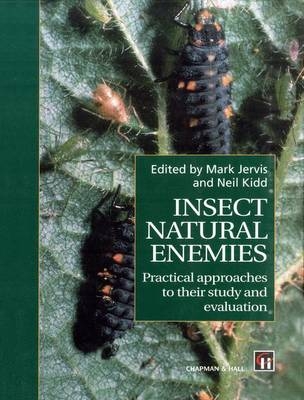
Insect Natural Enemies
Chapman and Hall (Verlag)
978-0-412-39900-8 (ISBN)
- Keine Verlagsinformationen verfügbar
- Artikel merken
Over the past two decades there has been a dramatic increase in theoretical and practical studies on insect natural enemies, particularly on parasitoids. The appeal of insect predators - and parasitoids in particular - as research animals derives from the relative ease with which some species may be cultured and experimented with in the laboratory, the simple life cycles of most parasitoids, and the increasing demand for biological control. This text is designed for enquiring students or research workers on appropriate approaches and techniques for the study and evaluation of such insects. This book is an account of major aspects of the biology of natural enemies, punctuated with information and advice on which experiments or observations to conduct and how to carry them out. Guidance is provided where necessary on the literature that may need to be consulted on particular topics. This book on predators and parsitoids emphasizes practicalities and is aimed at students and professionals working in universities and both government and commercial institutes in the fields of pest management, agriculture, horticulture and forestry.
This book should be of interest to senior undergraduates, postgraduates and research workers in applied entomology, pest management and crop protection.
Part 1 Foraging behaviour, J.J.M. van Alphen and M.A. Jervis: behaviour of insect parasitoids and predators; methodology; the treatment of parasitoids prior to their use in experiments; recording and statistical analysis of behavioural data; host/prey finding and selection behaviour; deciding what clutch size to lay; host-feeding behaviour; host discrimination; sex allocation; functional responses; switching behaviour; patch time allocation; patch defence behaviour; distribution of parasitoids over a host population; measuring encounter rates; life history characteristics and searching behaviour; foraging behaviour and taxonomy; parasitoid behaviour and community ecology. Part 2 The life cycle, M.A. Jervis and M.J.W. Copeland: anatomical studies; female reproductive system; male reproductive system; sex ratio; locating eggs in hosts; fecundity; adult longevity; growth and development of immatures; survival of immatures; intrinsic rate of natural increase. Part 3 Mating behaviour, H. van den Assem: making records; general methodology; equipment used in observing mating behaviour; the early stages of mating behaviour; stimulus production; some quantitative aspects of mating behaviour; female receptivity and its consequences; aspects of mating "sensu stricto"; mating success; comparative studies of mating behaviour. Part 4 Populations and communities, W. Powell and .M.P. Walton: field sampling techniques; determining trophic relationships; genetic variability in field populations of natural enemies. Part 5 Population dynamics, N.A.C. Kidd and M.A. Jervis: demonstrating and quantifying predation and parasitism; the role of natural enemies in insect population dynamics; selection criteria in biological control. Part 6 Phytophagy, M.A. Jervis and N.A.C. Kidd: what plant materials do natural enemies feed upon, and from what sources?; do natural enemies show specificity in the plant food sources they exploit?; interpreting patterns of resource utilization; insect preferences and foraging energetics; natural enemies as pollinators.
| Zusatzinfo | references, index |
|---|---|
| Verlagsort | London |
| Sprache | englisch |
| Maße | 189 x 246 mm |
| Gewicht | 980 g |
| Themenwelt | Naturwissenschaften ► Biologie ► Zoologie |
| Weitere Fachgebiete ► Land- / Forstwirtschaft / Fischerei | |
| ISBN-10 | 0-412-39900-8 / 0412399008 |
| ISBN-13 | 978-0-412-39900-8 / 9780412399008 |
| Zustand | Neuware |
| Haben Sie eine Frage zum Produkt? |
aus dem Bereich


